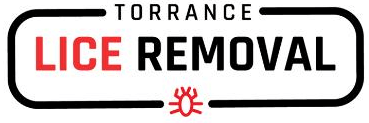As the weather warms and children go back into school from remote learning, parents start to worry about their child coming home with head lice. There are as many as 12 million head lice infestations each year among American kids, according to the U.S. Centers for Disease Control and Prevention. But the bugs – while a nuisance – are essentially harmless.
Head lice are generally found on the scalp, around the ears and at the back of the neck. An adult head lice, or louse, is about the size of a sesame seed and reddish brown in color. The eggs are smaller and are silver in color. Head lice do not transmit disease and are not a sign of someone being “dirty.” The most common symptom of having head lice is scratching. Lice cannot hop or fly; they are spread through direct contact with the head of another infested person. Contact with personal belongings of an infested person, such as combs, hats, and brushes can also transmit head lice, but is much less common.
If your child or you have head lice, you really need to focus on the lice eggs. Adult lice only live about 30 days and because they breathe can be suffocated with outside product. Lice eggs (nits) its are attached to the hair, close to the scalp, and can only be removed by pulling the nit all the way down the length of the hair. Lice eggs hatch within 5-7 days. Lice eggs that are close to the surface of the head may still be viable and should always be removed to prevent re-infestation.
Head lice have mutated over the years and are now resistant to the chemicals in over-the-counter treatments such as RID or NIX. Flammable substances such as gasoline and kerosene should never be used to treat head lice. Head lice do not survive long if they fall off a person so there is no need to spend a lot of time or money on housecleaning. They only can survive up to 48 hours if off the scalp. Wash and dry clothing, bed linens and other items that the infested person wore in the last couple of days; soak combs and brushes in hot water for 5-10 minutes and vacuum the floor and furniture where the infested person may have sat. The Centers for Disease Control does not recommend using fumigant sprays or fogs because they can be toxic and are not necessary.
If someone in your child’s class develops head lice, there is no reason to panic and automatically assume that your child will “catch” head lice. Parents should discourage their children from sharing personal items such as hats, helmets, brushes or combs to decrease the likelihood that the lice will be transmitted from one child to another. Children should also avoid head-to-head contact at school and avoid sleepovers and slumber parties during lice outbreaks. Another watch it out is to make sure you are loss free. Moms get lice about 85% of the time when their child gets it. Moms with children under 12 are at particularly high risk because they are still often sleeping and cuddling with their children very often. Contact Torrance Lice Removal at 800-920-LICE for information on treating head lice or to book and appointment for a professional head screen or treatment.

